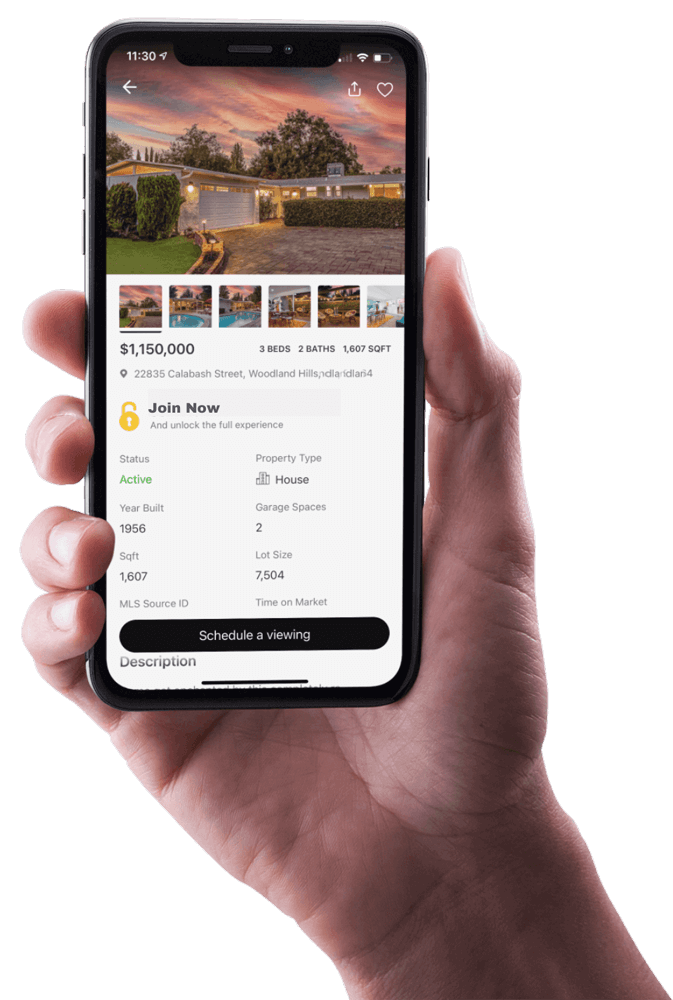
A clear, practical explanation of reverse mortgages helps Utah homeowners and their families make informed decisions about tapping home equity in retirement. This article summarizes key points about Home Equity Conversion Mortgages (HECMs), eligibility and documentation, cash distribution options, who benefits most, and what heirs can expect when a borrower passes away. The goal is to present the facts without marketing spin so Utah seniors, caregivers, and advisors can evaluate whether a reverse mortgage fits into a local retirement or financial plan.
What is a reverse mortgage?
A reverse mortgage is a loan secured by a home in which repayment is deferred until a later event—typically when the home is sold, the last eligible borrower permanently moves out, or the last borrower dies. Unlike a traditional (forward) mortgage, where the borrower begins with a large balance and makes payments to reduce it, a reverse mortgage starts with a low or zero borrower balance, does not require regular monthly payments, and accrues interest and fees over time. In essence, the cash flow is reversed: instead of the borrower paying the servicer, the servicer pays the borrower.
HECM: The FHA-Insured Reverse Mortgage
The dominant reverse mortgage product in the United States is the Home Equity Conversion Mortgage (HECM), which is insured by the Federal Housing Administration (FHA). As the only federal government-insured reverse mortgage, HECMs generally offer the most common terms and broadest protections available to borrowers. HUD (the U.S. Department of Housing and Urban Development) oversees the program through FHA rules and counseling requirements.
Eligibility and required counseling
To qualify for a HECM, applicants must meet several requirements:
- Age: At least 62 years old (for at least one borrower on the title).
- Counseling: Completion of HUD-approved reverse mortgage counseling (in-person or by phone). The counseling certificate is valid for 180 days.
- Primary residence: The property must be the borrower's primary residence and meet FHA property standards.
- Equity: Substantial home equity is typically required after accounting for existing liens and closing costs. The amount of available proceeds depends on the property value, the age of the youngest borrower, current interest rates, the HECM type chosen, and the borrower’s existing mortgage payoff amount (if any).
- Property charges: Borrowers must keep paying property taxes, homeowner’s insurance, and any HOA fees. This requirement is identical to other homeownership situations and is not unique to reverse mortgages.
Property charges and the financial assessment
Since HECM borrowers remain homeowners, property-related expenses continue to be required. These include property taxes, hazard insurance, and HOA fees where applicable. Roots of common misconceptions are apparent when these ongoing duties are presented as though they are a “penalty” for reverse mortgages; in reality, maintaining the property is part of homeownership regardless of mortgage type.
Explore Utah Real Estate

5618 E SOUTH FORK RD, Provo, UT
$43,000,000
Bedrooms: 6 Bathrooms: 10 Square feet: 22,958 sqft

864 W SAPPHIRE SKY LN #546, St George, UT
$4,300,000
Bedrooms: 7 Bathrooms: 9 Square feet: 5,136 sqft

1700 W 2700 N #36, Pleasant View, UT
$230,000
Bedrooms: 4 Bathrooms: 2 Square feet: 2,100 sqft
HECM loans also include a financial assessment designed to evaluate the borrower’s ability to meet ongoing property charges. Introduced in 2015, the assessment reviews credit history, income sources, assets, and “residual income” (income minus living expenses). Rather than relying only on a forward mortgage-style debt-to-income ratio, the residual income standard helps identify whether a senior can reasonably sustain the costs of homeownership.
Residual income thresholds vary by household size and location. For example, commonly cited state-by-state examples have a two-person household in Florida with a residual income requirement near $886 per month; actual HUD thresholds depend on the local cost-of-living and household size. The financial assessment is intended to reduce the likelihood of default on property charges while widening access for borrowers who might not qualify under forward mortgage rules.
How loan proceeds can be received
HECM proceeds can be distributed in several ways, and choice of distribution affects flexibility and long-term planning:
- Lump sum: A one-time payment available for certain HECM types (often fixed-rate HECMs).
- Tenure or term payments: Scheduled monthly payments for life (tenure) or a set period (term).
- Line of credit: An available amount that grows over time and can be drawn when needed. HECM lines of credit function differently from traditional HELOCs and can offer an expanding borrowing buffer in the years after origination.
- Combination: Borrowers can combine these options (for example, a smaller lump sum at closing plus a line of credit for future needs).
Deciding how to receive proceeds depends on cash needs, long-term financial planning, tax considerations, and the borrower’s goals. A combination of a modest immediate draw and a growing line of credit is a common planning strategy to preserve flexibility for future expenses.
Who benefits most from a reverse mortgage?
Practitioners categorize HECM borrowers who gain the most value into three main groups:
More Properties You Might Like

850 LAZY WAY #8, Francis, UT
$1,300,000
Bedrooms: 4 Bathrooms: 4 Square feet: 2,755 sqft

La Casa Cir, St George, UT
$575,500
Square feet: 14,391 sqft

7665 STERLING DR, Park City, UT
$6,100,000
Bedrooms: 5 Bathrooms: 6 Square feet: 4,975 sqft
- Need: Households that require immediate cash for critical expenses—medical bills, urgent repairs, caregiving costs, or other one-time needs—may use a reverse mortgage to access home equity quickly.
- Lifestyle: Borrowers who want to increase monthly cash flow without selling their home or liquidating investments can benefit from no monthly mortgage payment obligations. Adding a line of credit or scheduled payments can support travel, home improvements, or daily living expenses.
- Financial plan integration: Some retirees prefer not to tap investment accounts or taxable distributions. A reverse mortgage can be used strategically alongside retirement portfolios to create tax-efficient cash flow or to act as a reserve for unexpected expenses. Statistically, a large share of senior net worth is concentrated in housing equity, making HECM a tool for converting illiquid assets into usable funds.
When a reverse mortgage may not be appropriate
Reverse mortgages are not a universal solution. Common situations where a reverse mortgage may be a poor fit include:
- Short-term residency: If the homeowner plans to move or sell within a few years, the structure and upfront costs of a reverse mortgage may outweigh the benefits.
- Marginal benefit: When the available proceeds would only cover the current monthly mortgage—without materially improving financial security—the borrower might be better served by other options.
- Risk of increased indebtedness: Borrowers who plan to add significant new debt after a reverse mortgage may reduce long-term equity and complicate estate planning.
What happens to the house when the last borrower dies?
HECM reverse mortgages are non-recourse loans. That means neither the borrower nor heirs are required to repay more than the home’s value at the time of sale. FHA mortgage insurance premiums (collected as part of the loan cost and accruing interest) fund protections that limit the borrower’s or estate’s repayment liability to the home’s market value when sold.
Heirs commonly face these options when the last eligible borrower passes away:
- If the home has equity and the heirs do not want to keep the property: sell the home, pay off the reverse mortgage from sale proceeds, and distribute any remaining proceeds as part of the estate.
- If the home has equity and an heir wishes to keep the property: the heir may pay off the loan or refinance the home into their name to remove the reverse mortgage lien.
- If there is little or no equity and an heir wants to keep the home: the heir may be able to refinance at up to 95% of the home’s current value under certain non-recourse protections (specific program rules and marketplace options apply).
- If there is no equity and heirs do not want the home: a deed in lieu of foreclosure may be an option, allowing heirs to relinquish the property and avoid further obligations.
Conclusion
Reverse mortgages—especially FHA-insured HECMs—are a legitimate financial tool for many seniors seeking to convert home equity to cash without monthly mortgage payments. Qualification requires age 62 or older, HUD-approved counseling, primary-residence status, sufficient equity, and the ability to maintain property charges as verified through a financial assessment. Well-suited use cases include urgent cash needs, lifestyle cash-flow planning, and integration into a broader retirement strategy. They are less appropriate for short-term residents or situations with minimal net benefit. Utah homeowners evaluating a reverse mortgage should compare options carefully with trusted local advisors and consider impacts on estate plans and long-term housing goals.
For Utah-specific housing resources and to explore local listings and market dynamics, consult https://bestutahrealestate.com. For official program information and regulatory guidance, authoritative resources include utah.gov and nar.realtor for broader real estate data.
Frequently Asked Questions
Who is eligible for a HECM?
Eligibility requires at least one borrower age 62 or older, completion of HUD-approved counseling (certificate valid for 180 days), owner-occupancy of the property, conformity to FHA property standards, and sufficient home equity after paying any existing liens and closing costs. The borrower's ability to maintain property charges is evaluated through a financial assessment.
What ongoing responsibilities do borrowers have?
Borrowers must continue to pay property taxes, homeowner’s insurance, and any HOA dues. Failure to meet these obligations can lead to loan default and potential foreclosure, the same risk faced by any homeowner who stops paying required property-related expenses.
How does the financial assessment differ from forward mortgage underwriting?
Rather than relying solely on debt-to-income ratios, HECM financial assessments evaluate residual income (income minus expenses) and other factors to determine whether the borrower can sustain property charges. This approach can allow homeowners with substantial assets but modest documented income to qualify where forward-mortgage standards might decline them.
How can loan proceeds be received?
Proceeds can be received as a lump sum, scheduled monthly payments (for life or a set term), a line of credit that grows over time, or any combination of these options. Choice of distribution affects short- and long-term liquidity and should align with financial goals.
What protections do heirs have?
HECMs are non-recourse loans: neither borrowers nor heirs owe more than the home’s value at sale. Heirs can sell the home, refinance to keep it, finance the payoff in other ways (subject to market lending rules), or in some cases execute a deed in lieu of foreclosure if no equity remains and keeping the home is not desired.
Where can Utah homeowners get localized guidance?
Local real estate professionals, HUD-approved reverse mortgage counselors, and state housing resources are useful starting points. Official program details are available at HUD resources accessible via utah.gov, and national market context can be obtained through nar.realtor.














